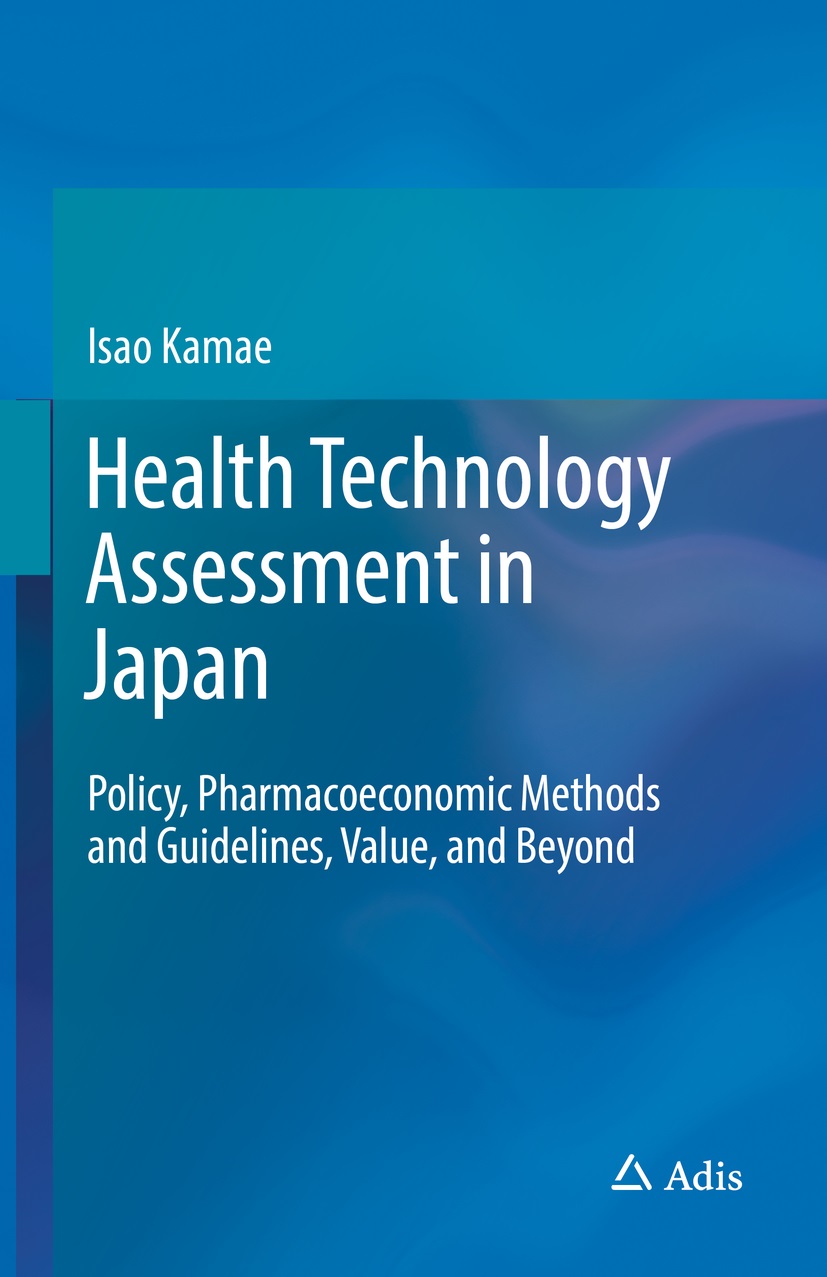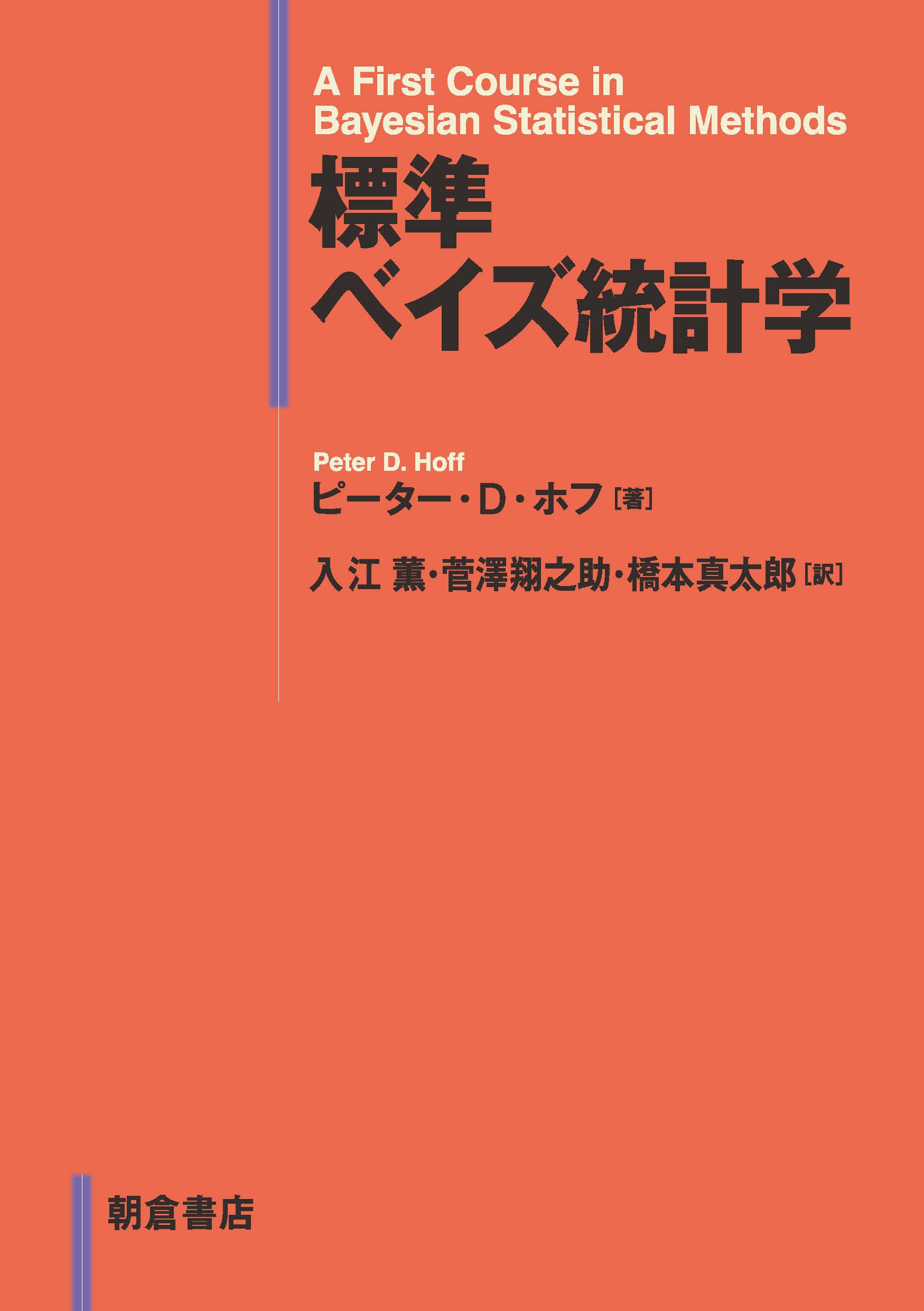
Title
Health Technology Assessment in Japan Policy, Pharmacoeconomic Methods and Guidelines, Value, and Beyond
Size
265 pages, hardcover
Language
English
Released
2019
ISBN
978-981-13-5792-3
Published by
Springer Nature Singapore Pte Ltd. / ADIS
Book Info
See Book Availability at Library
Japanese Page
Representing the first book on the topic, this work offers the reader an introduction to the Japanese systems for health technology assessment (HTA) officially introduced by the Ministry of Health, Labour and Welfare (MHLW) in 2016. Policy and guidelines are discussed, with the relevant methods and conditions of cost-effectiveness analysis explained alongside. Numerous instructive examples and exercises, ranging from basic to advanced, impart valuable knowledge and insight on the quantitative methods for economic evaluation, which will appeal to both beginners and experts.
This guidebook is authored by Japan’s foremost expert in HTA and pharmacoeconomics, with a view to strengthening the reader’s expertise in value-based healthcare and decision-making. The methods presented are essential to informing regulatory, local, and patient decisions; as such, the book is equally recommended to industry and government, as well as academia, and anyone with an interest in Japanese HTA.
Dr. Yasuki Kobayashi, Professor of Public Health, Graduate School of Medicine, University of Tokyo, endorsed this book, stating “A long-awaited standard text book of health technology assessment (HTA) is published and authored by the leading HTA expert Professor Isao Kamae. Due to advances in health technology, financial constraints, and fundamental practical knowledge to global healthcare HTA is a powerful tool in achieving the best healthcare value for patients. Countries such as Canada, Australia, the UK, and South Korea, which provide universal health coverage already have HTA “institutionalized” within their respective healthcare systems. HTA integration is as important in Japan, not only in clinical practice but also for the export of health technologies to overseas as a growth strategy. However, few textbooks have been written in Japanese in this field, and most were published more than a decade ago, as the country lagged behind the global trends toward the “institutionalization” of HTA. This book by Professor Kamae offers a comprehensive picture of HTA in that it pays close attention to the three essential pillars in institutionalizing HTA, namely 1) systems and policy, 2) guidelines, and 3) the role of the body conducting the assessment, in addition to easy-to-follow discussions on HTA methodology. It is also a perfect “workbook,” with accompanying exercises and applications. This is a handbook highly recommended to all those who seek to address this great challenge.”
The features of this book include:
--The minimum essence of occupational knowledge required in HTA practice,
--Reference to the MHLW’s Guideline 2.0 (2019) for Preparing Cost-Effectiveness Evaluation to the Central Social Insurance Medical Council, describing the key points of the new HTA system with full guideline statements (Chapters II, III, and IV),
--Features designed to assist learning the methods for analysis, including exercises for beginners develop their practical expertise (Chapter V), The list of “Key points” that summarizes the key concepts in each section, and “Self-check” questions to review the material presented in the section,
--A brief discussion of the methods involved in HTA for intermediate learners (Chapter VI), and topics addressed in recent studies to meet the needs of advanced readers.
(Written by KAMAE Isao, Project Professor, Graduate School of Public Policy / 2021)
Table of Contents
I. Basics to Know
1. What is Health Technology Assessment (HTA)?
2. Value-based medicine and economic evaluation
3. Introduction to cost-effectiveness analysis
4. Assessing cost-effectiveness
5. Cost-effectiveness league table
6. Common misperceptions
7. Confusing HTA-related terminology
II. New HTA Policy in Japan
1. Past HTA system in Japan
2. Road to the implementation of a new HTA policy in Japan
3. Overview of the 2016 provisional implementation of HTA in Japan
4. Controversial issues on the methodology in 2016-2018
5. Summary of HTA institutionalization in 2019
6. Issues for further development of HTA in Japan
III. MHLW Guideline 2016 for Cost-effectiveness Analysis
1. Objectives
2. Analysis perspective
3. Target population
4. Comparator(s)
5. Additional benefit
6. Methods of analysis
7. Time horizon
8. Choice of outcome measure
9. Sources of clinical data (except costs)
10. Calculation of healthcare costs
11. Public long-term care costs and productivity loss
12. Discounting
13. Modeling
14. Uncertainty
IV. How to Appraise
1. What is “appraisal”?
2. Basics on critical appraisal of CEA studies
3. Appraisal for HTA agency
V. Exercises for Powerful Assessment
(1) Basics in Biostatistics and Clinical Epidemiology
1. Monthly cost of pharmaceutical treatment
2. Epidemiological survey
3. Sample size calculation (1)
4. Sample size calculation (2)
5. Diagnostic tests and decision tree for lung cancer
6. Number needed to treat (NNT)
(2) Methods for Economic Evaluation
1. Discounting
2. Standard gamble method
3. Time trade-off method
4. CEA for colon polypectomy
5. Markov model for metabolic syndrome
6. Scatter plot
7. Cost-effectiveness Acceptability Curve (CEAC)-(1)
8. Cost-effectiveness Acceptability Curve (CEAC)-(2)
9. Cost-effectiveness Acceptability Curve (CEAC)-(3)
10. Cost-effectiveness Acceptability Curve (CEAC)-(4)
11. Budget impact analysis (BIA)
12. Budget constraint and ICER
(3) Business Strategy
1. Hurdle or opportunity?
2. Moving from multidisciplinary to interdisciplinary approach
3. Use of pharmacoeconomics to support manufacturer internal decision making
4. External consulting
5. Dissemination of information on results
6. Pricing and premium rate in Japan
VI. Methods at the Intermediate Level
1. Clinical diagnosis and decision analysis
2. Calculation of QALYs and related issues
3. Incremental net benefit (INB) and the cost-effectiveness acceptability frontier (CEAF)
4. Efficiency frontier and innovation
5. Expected value of perfect information (EVPI)
6. Logistic regression and risk estimation
7. Meta-analysis and indirect treatment comparison
8. Cox proportional hazard models
9. Propensity score analysis
10. Bayesian versus frequentist statistics
VII.Advanced Research Topics
1. Cost-effectiveness function and ICER
2. Interval estimations using the tangent ICER
3. Which is better index, ICER or average cost?
4. Change of ICER estimation due to comparator selection
5. Decision criteria for ICER at the multiple levels
6. The relationship between ICER and budget impact
7. ICER formula and Japan’s value-based pricing
8. Repricing by Bayesian statistics in Japan
Correction to: MHLW guidelines for cost-effectiveness analysis
CORE2HEALTH
Terminology
Abbreviations
Suggested answers to the “self-check” questions
Index
Related Info
“This work offers the reader an introduction to the Japanese systems for health technology assessment (HTA) officially introduced by the Ministry of Health, Labour and Welfare (MHLW) in 2016. Policy and guidelines are discussed, with the relevant methods and conditions of cost-effectiveness analysis explained alongside. Numerous instructive examples and exercises, ranging from basic to advanced, impart valuable knowledge and insight on the quantitative methods for economic evaluation, which will appeal to both beginners and experts. For more information, please visit here: https://www.springer.com/in/book/9789811357923#”



 Find a book
Find a book


 eBook
eBook